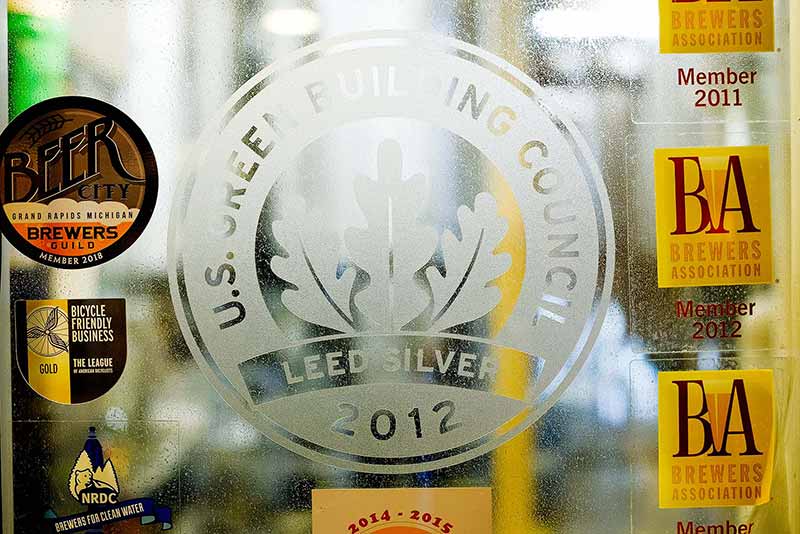
In 2023, many Millennial and Gen Z consumers and workers have indicated that they want to support and work for a business that aligns with their values, such as sustainability, social-mindedness, diversity, equity, and inclusion.
A recent 2023 Gen Z and Millennial Survey conducted by Deloitte that connects with over 22,000 Gen Zs and Millennials across 44 countries found that “50% of Gen Zs and 46% of Millennials say they and their colleagues are pressuring businesses to take action on climate change.”
Furthermore, a study from McKinsey & Company reported that seventy percent of Gen Z respondents like to purchase products from companies they consider ethical.
We’re quickly moving into an era where, for a brewery, it’s no longer acceptable just to make fantastic beer. Your business must also show that it has a clearly defined mission, a goal to support specific communities, and a dedication to protecting the environment.
Along those lines, two top accreditations a brewery can earn include B Corp Certification and LEED Certification. We’ve already written our guide to becoming a B Corp Certified brewery, so we’re following up with another comprehensive handbook on achieving LEED Certification.
We spoke with Brewery Vivant, who became LEED Silver Certified in 2012, the first-ever brewery to do so, and MadTree Brewing, who achieved LEED Gold Certification last year, to show you the steps to get your LEED Certification and why it is so important.
(Photography courtesy of Brewery Vivant)
What We’ll Cover in This Piece:
Affordable, Industry-Leading Brewery Software
What Is LEED Certification?
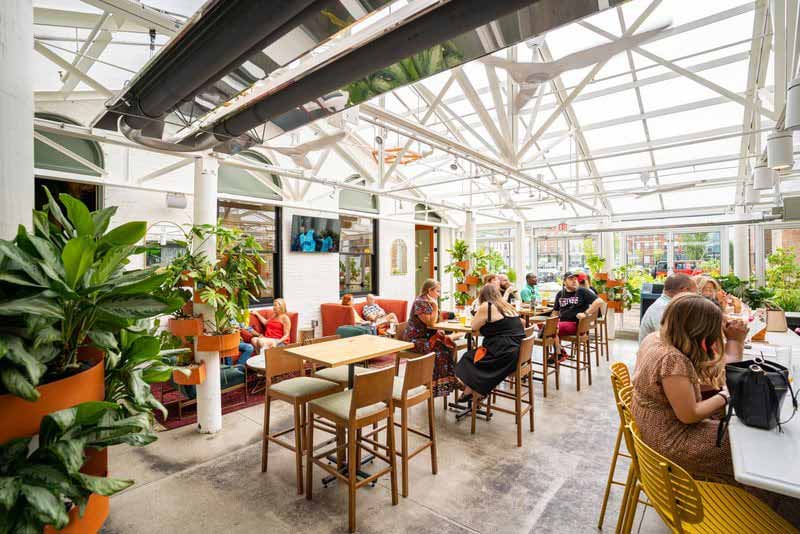
Photography courtesy of MadTree Brewing
Standing for Leadership in Energy and Environmental Design, LEED Certification is the world’s most widely used green building rating system.
“The easiest way to describe it is a green building standard,” says Kris Spaulding, co-founder of Brewery Vivant in Grand Rapids, MI. “As you work on a new project or redo an existing space, you can go for certification to make sure you follow environmental standards.”
Essentially a global recognition of achieving sustainability and leadership, LEED Certification symbolizes that your business followed rigorous standards and methods to make a building more sustainable.
How Does LEED Certification Work?
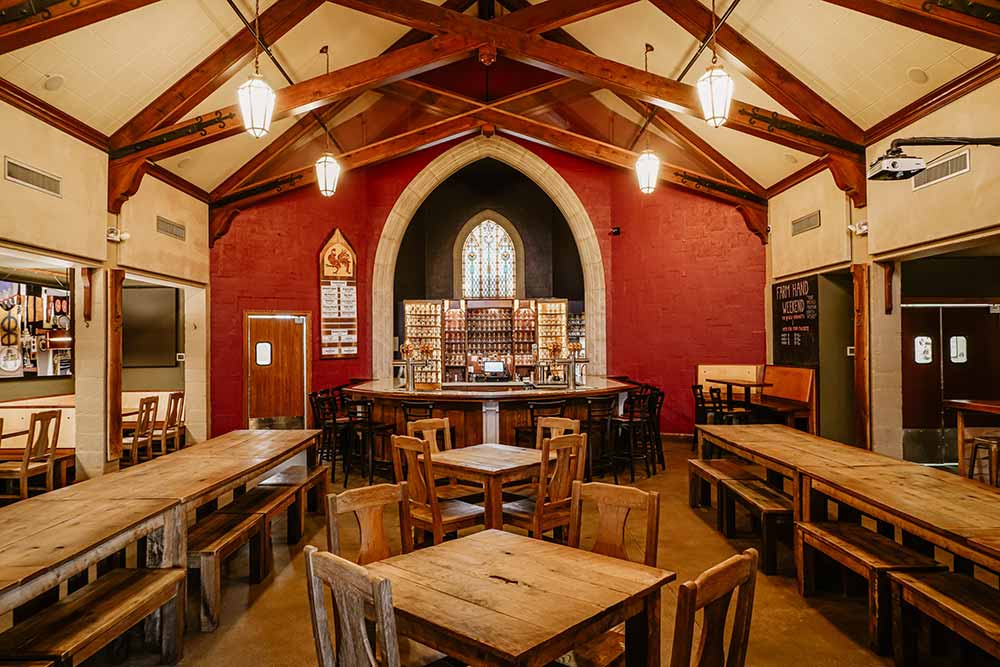
Photography courtesy of Brewery Vivant
The framework of LEED Certification lies in choosing green options for a new or existing building project.
To help define these standards, the U.S. Green Building Council (USGBC) created a certification system.
Any building can apply for LEED Certification, whether it’s a brewery, hospital, or school. Depending on the project, you choose which rating system to follow: LEED for Building Design and Construction, LEED for Interior Design and Construction, LEED for Residential, LEED for Cities and Communities, or LEED for Building Operations and Maintenance.
Each category has its requirements, so read more about these classifications in the link above to find the track that best fits your project.
Once you find the right rating path, review the Minimum Program Requirements through the LEED Reference Guide or LEED credit library.
From here, the best advice that Spaulding can give is to work with people who understand the requirements for LEED Certification.
“Meet with your partners, your contractor, your architect, and whomever, and look at the type of project because LEED has all types depending on if the project is new construction or an existing building and identify what the best things for you to pursue based on the project are,” she says.
You can use the LEED scorecard to monitor your progress.
You’re looking to achieve, at a minimum, a score of forty points, but based on your overall score, you’ll rank in a different level of LEED Certification: Certified (40-49 points), Silver (50-59 points), Gold (60-79 points), and Platinum (80+ points).
Obviously, the higher levels are harder to get to but show a higher dedication to sustainability.
Two Reasons to Go After LEED Certification

Photography courtesy of MadTree Brewing
The motivation to achieve a LEED Certification differs from business to business.
For Brewery Vivant, Spaulding says they baked sustainability into the plan from the beginning. Opening in Grand Rapids, Brewery Vivant knew the city had, at the time, the highest number of LEED Certified buildings per capita in the U.S., according to Spaulding.
“We wanted to follow green building standards in general, but achieving certification would be a way to show serious commitment,” says Spaulding.
Brewery Vivant recognized that their local consumers appreciated businesses focused on the environment (way before Millennials and Gen Zers started asking for more accountability).
MadTree had a similar impetus, putting sustainability first since opening in 2013.
“We are a company committed to sustainability and our impact work. We are looking to grow the company by three times and have $5M of impact work along the way.” wrote Rhiannon Hoeweler, MadTree’s VP of experience and impact, in an email to Next Glass.
At their Alcove location, MadTree made intentional decisions to make the building more environmentally friendly, from using high-efficiency LED lighting featuring B Corp Certified, biodynamic, or woman-owned vineyards on its wine list.
Hoeweler says that, at MadTree, they believe achieving certification has led to “a more engaged staff, consumers, and community. LEED [Certification] is one more way in which we are investing back in the planet and the three stakeholders listed above; it’s also the right thing to do!”
The Best Tips and Tricks to Achieve LEED Certification
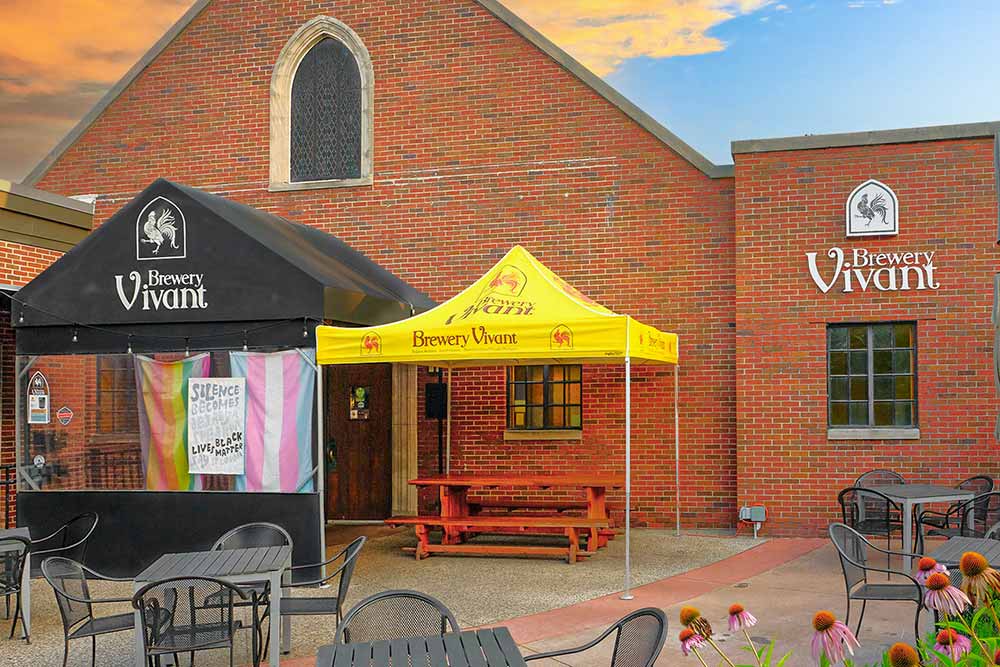
Photography courtesy of Brewery Vivant
Since Brewery Vivant holds the title of the first-ever LEED Certified brewery in the country, Spaulding says people constantly reach out to her to ask for advice.
According to Spaulding, for a first step, you must identify partners that understand LEED Certification and your project’s objectives.
“LEED is nice because it’s a cafeteria-style menu with all the things you can do based on how many you choose to go get different levels of points and different levels of certification,” says Spaulding. “But each project is so different … really it’s less important that me, the business owner, know all [the LEED standards] than to have all your partners in the project know, understand, and educate you along the way.”
She recommends hiring someone on your team called a LEED AP, an additional person who gets involved and collects all the data and documentation you need for certification. “You could do that yourself if you wanted if you know what to collect and submit, but we didn’t have the mental capacity to do that role,” she says, sharing that starting and building out a brewery proved to be a big enough project itself. “Being with the right partners makes a huge difference right from the beginning, knowing commitment and holding strong.”
Similarly, MadTree partnered with the real estate developer 3CDC to make intentional decisions with sustainability in mind. Hoeweler says that, while you can bring the work in-house, working with the construction company and consultants with LEED Certification experience makes all the difference. “Pick a construction company and partners in the process that align with your objectives and outcomes,” she wrote. “They are a big piece of making LEED [Certification] come to life.”
How Long Does LEED Certification Take?
The time to achieve LEED Certification varies by project. For MadTree, certifying its Alcove location took about ten months from start to finish, according to Howeler.
Brewery Vivant started its certification in 2010 but didn’t achieve LEED silver until 2012.
Spaulding says you should be less concerned with time and more thoughtful about deciding to go for LEED Certification from the very start.
“The main thing that is important for people to understand is you want to make that decision [for LEED Certification] before you do anything with the project,” she says. “If you decided to do it part way through, you’d be missing all the documents from the beginning.”
If you’re going to go after LEED Certification, it’s immensely easier to speak the language from the very beginning.
What Is the Cost of LEED Certification?
While the actual certification has no cost, achieving LEED Certification means that you will need to make decisions that could have a price associated with them. For example, using a more energy-efficient heating and cooling system or efficiently sourced wood.
“Along the way in your project, you’re making decisions about materials you want to use, and sometimes there is a cost differential there,” says Spaulding, who recommends reframing your point of view from the present to the future.
“When doing a green building project, it is easy to get caught up in short-term thinking versus the long-term cost,” she says. “If you’re using a more energy-efficient system, there is more cost upfront, but you’ll save more money long-term because you’re spending less money. You have to view the project as longer than this moment you’re in today.”
What Are Some Examples of Programs That Can Earn You LEED Certification Points?
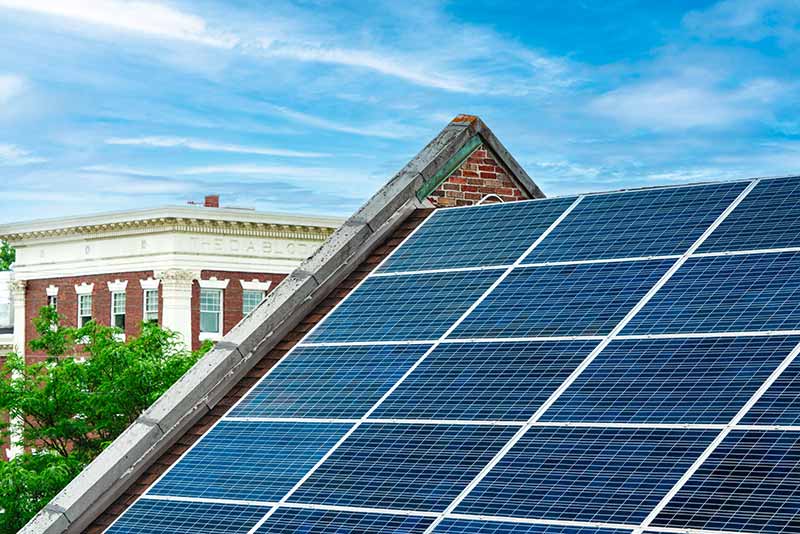
Photography courtesy of Brewery Vivant
Here are some programs and initiatives that scored LEED Certification points for Brewery Vivant and MadTree.
For Brewery Vivant, Spaulding says the location significantly impacts point potential. “Think about, can people get to your place on public transportation? Is it bike friendly? Can people walk there? How can people get there? Are you in a mixed-use development versus an industrial park? Are you within more of the woven fabric of a community?”
Located in a brownfield, or contaminated/unused site, Brewery Vivant scored many points for choosing a site they made sustainable. “If you select a less-than-desirable site, that’s beneficial because you’re cleaning up or making it better,” says Spaulding, noting that in the end, they actually didn’t get points for being at a brownfield site for tax reasons, but that’s the general idea. “It’s not about where’s the cheapest place we can find, but can people actually get there.”
LEED Certification heavily considers energy efficiency, a tough category for a brewery because “we’re using a lot of energy in comparison to an office building that just has to light things,” says Spaulding. “But if you commit to green energy and purchasing renewables through utilities or having solar power on-site, those matter.”
Spaulding says a lot of LEED Certification comes down to the materials you use in your building. “Can you harvest and manufacture the material locally or regionally?”
Along those same lines, do the materials you’re using contain volatile organic compounds? “That will impact the safety of the people that made those materials, the people putting those materials in your places, and your guests,” says Spaulding. “There are a lot of safety concerns that are environmental along the way when talking about paints, adhesives, and sealants, not the exciting things but super important.”
Another category where you can score points is energy. Brewery Vivant uses a high-efficiency heating and cooling unit with CO2 sensors, resulting in energy savings of seven percent.
You can also gain a lot of points by how you approach water. “How much water are you using? Are you irrigating on site if you have landscaping?” says Spaulding.
Brewery Vivant doesn’t use potable water to irrigate their landscaping, instead opting for all native non-irrigation for plants on site.
Additionally, they utilize low-flow urinals and toilets in the bathrooms and sinks that use sensors to turn on and off to reduce water use, saving nearly 50,000 gallons of potable water.
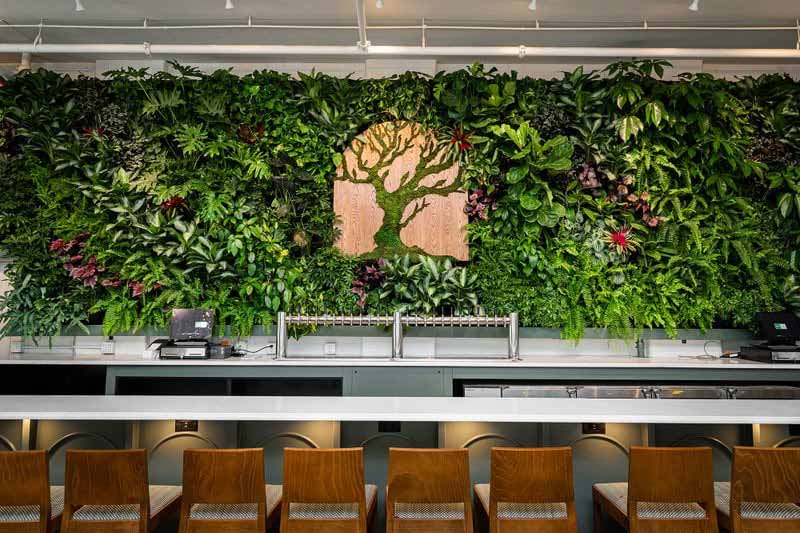
Photography courtesy of MadTree Brewing
At MadTree’s Alcove space, they made several intentional decisions that helped them achieve a Silver Leed Certification.
For example, they preserved ninety-eight percent of the original walls, floors, and roofs during construction, diverting 274.5 tons of waste away from landfills.
The Alcove also uses high-efficiency LED lighting, high-grade air filters, CO2 sensors, and volatile organic compound air quality monitors.
From a water standpoint, low-flow faucets and fixtures save 52,111 gallons of water per year.
You’ll also find a living wall with over 2,000 plants inside and a Pollinator Garden made with 1% For the Planet partner Rothenberg Rooftop Garden, which provides ingredients for some of Alcove’s dishes.
Quick Differences Between B Corp Certification and LEED Certification
The most significant difference between the process for B Corp Certification and LEED Certification is that, with B Corp, you need to recertify every three years to prove you’re continuing to do all the good things that certified you in the first place.
LEED Certification is a one-time achievement. “We have a plaque forever, and no one can take that away,” says Spaulding.
Additionally, while B Corp Certification requires a business to pay an annual fee, LEED Certification has no cost attached to it.
One Final Word on LEED Certification
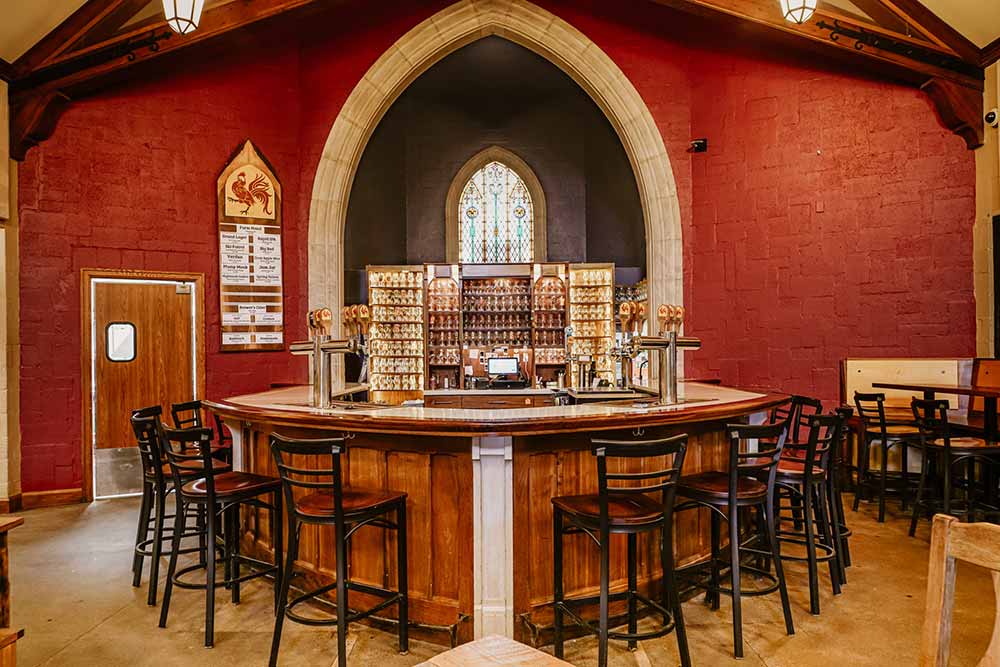
Photography courtesy of Brewery Vivant
These days, there are so many different avenues and opportunities to become LEED Certified.
You may think that the barrier to entry is too high for your brewery, but consider all the options.
“You can get LEED [Certification] for all sorts of things: houses, neighborhoods, schools, hospitals, etc., so if other breweries are thinking about it, just say, hey, our office building can be LEED Certified, and leave the manufacturing out of it,” says Spaulding. “At this point, there is probably LEED [Certification] for spaceships coming out soon. If you want to follow the standards, it’s really accessible information, so apply as it makes sense for your project.”



